Electricity is a large part of our daily lives. Without it, we would be able to engage in any activities.
We often don’t know exactly how precious it is until we experience a power outage. Electricity doesn’t just involve currents- it also allows individuals to move, think and feel. We explore several different static electricity experiments that illustrate what this natural phenomenon can do.
Table of Contents
Experiments Using Static Electricity
Experiments using static are fun. When most people consider experiments using static electricity, then envision the one involving hair and a balloon. However, many additional experiments will amaze children of any age and can effectively also illustrate how physics and chemistry are used in creating illusions.
*Warning: These experiments may debunk some well-known magic tricks!
Before we get into all the static electricity experiments, be sure to grab my free eBook with over 25 STEM experiments for kids. For all my free downloads, check out this page here.
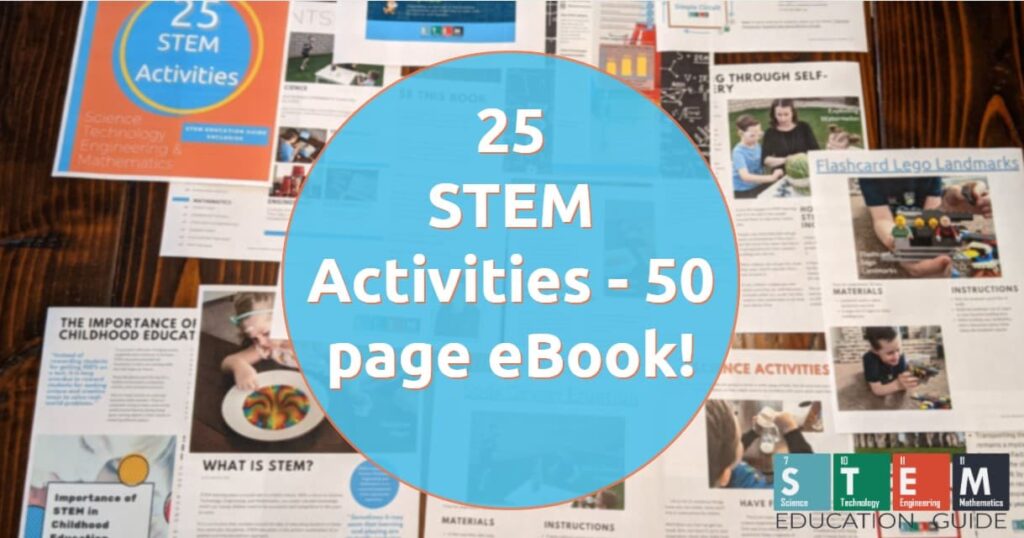
1. Static Electricity Butterfly
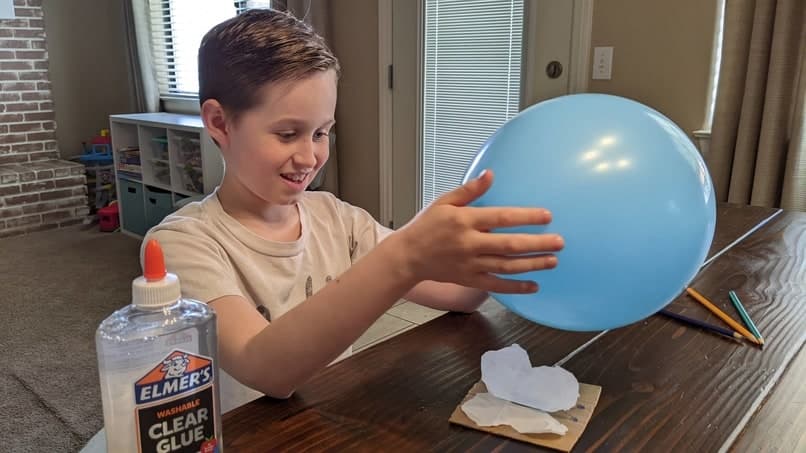
- Age: Elementary school
- Time: 15 minutes
- Difficulty Level: Easy
This experiment demonstrates how static electricity can move the wings on a tissue paper butterfly.
Materials:
- Glue stick
- Balloon
- Googly eyes
- Scissors
- Pencil
- Cardstock paper
- Tissue paper
- Cardboard
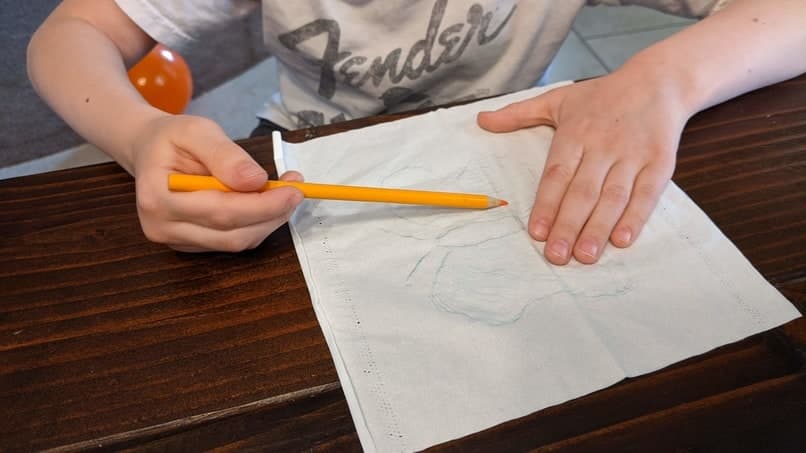
Instructions:
- Begin by cutting a square piece of cardboard into a 7″x 7″ square.
- Draw butterfly wings on a piece of tissue with a pencil. Make sure that it is smaller than your square. Cut the butterfly out and place them on the cardboard piece without gluing it.
- Cut the body of the butterfly using cardstock. Once finished, glue it to the middle of the butterfly. Make sure it overlaps the cardboard to prevent the wings from flying off. The wings need to be loose to demonstrate the effects of static electricity.
- Glue googly eyes on the butterfly. You can use pipe cleaners for antennae if you would like.
- Blow up the balloon.
- Rub the balloon on your hair to provide a static (electrical charge). Hold the balloon to the top of the butterfly. It should be close to it but shouldn’t touch the butterfly. You should see the wings lower and raise as the balloon is moved closer and further in distance.
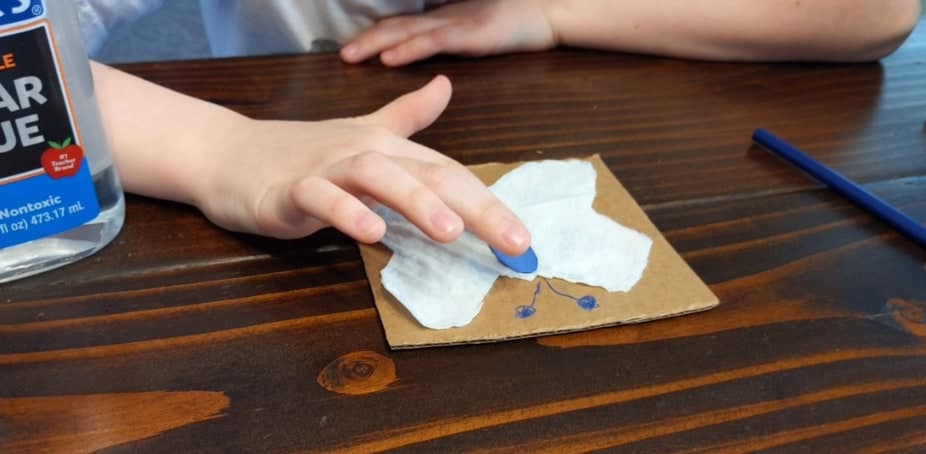
The Science Behind the Experiment
When a balloon is rubbed on hair, electrons form. Electrons go from the hair and are given to the balloon generating static. When a negatively charged balloon comes into close contact with positively charged tissue, they generate an attraction. The pull of the charged attraction enables the paper to move towards the balloon.
Static electricity experiments are fun to do. It incorporates both the principles of physics and chemistry into something very simple. It is the perfect way to engage any child in STEM education while teaching them that learning can indeed be fun.
2. Flying Bag Experiment
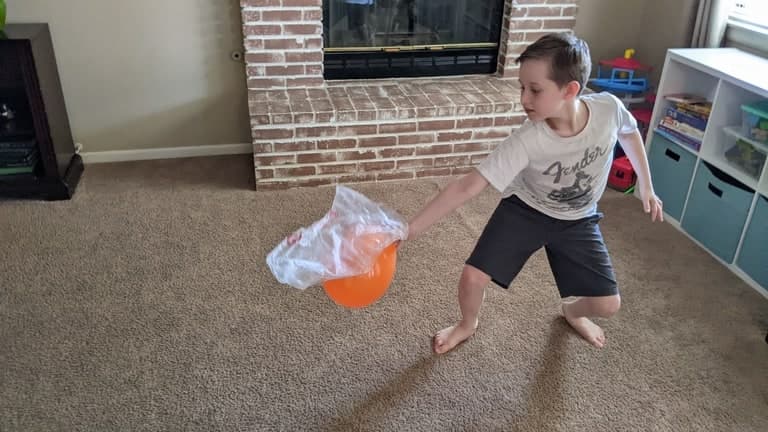
- Age: Any age
- Time: A few minutes
- Difficulty Level: Easy
No, this isn’t done by using an updraft of air but with static electricity. This is what levitates the bag into the air.
Materials:
- Light plastic bag
- Piece of material
- Plastic Rod
Instructions:
- Use the piece of cloth to run the plastic rod’s surface for 40 seconds.
- Flatten a plastic bag. Then rub the piece of fabric against the bag’s surface for 40 seconds.
- Release the bag and watch while it levitates in the air while the rod is waved below.
The Science Behind the Experiment
The fabric and rod become negatively charged after rubbing them together. Like charges are known to repel each other, so the bag appears to repel when the wand is waved.
My kids loved all the microscope activities we did hands-on in this article. It’s a great way of opening the world to what they can’t see!
3. Hovering Plates
- Age: Elementary School
- Time: A few minutes
- Difficulty Level: Easy
Using magnets is not the only way that items can repel each other. Hovering plates illustrates this concept very well.
Materials:
- 2 Styrofoam plates
- Piece of fabric, or your shirt
Instructions:
- Using the piece of fabric, rub the base of one plate.
- Put the plate (base up) on any flat surface.
- Attempt to place the other plate (base down) on top of the other plate. The two plates will repel each other.
The Science Behind the Experiment
This experiment works based on the principle of static electricity. This occurs when two things are rubbed together. The one plate receives electrons directly from the fabric and then becomes negatively charged. In turn, the electrons generated repel the other plate.
4. Bending Water Using Static Electricity
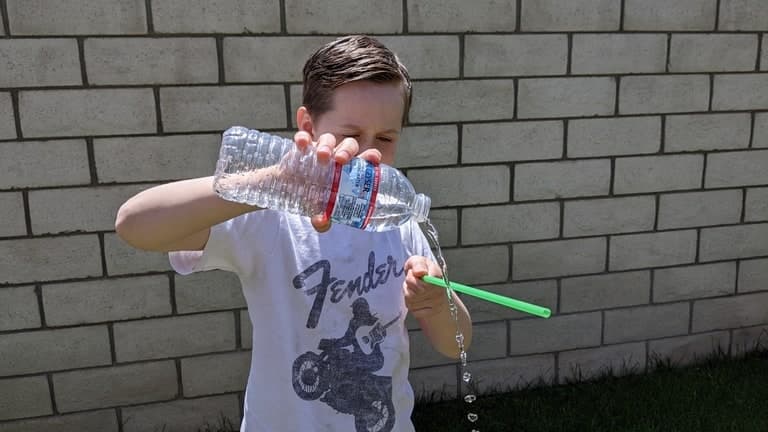
- Age: Elementary school
- Time: A few minutes
- Difficulty Level: Easy
In nature, water can bend due to the moon exerting tidal forces. The same phenomenon can be accomplished by using static electricity.
Materials:
- Running water
- Piece of cloth
- Plastic Rod or thick straw. My son used a smoothie straw like this because it’s thicker and works a little better.
Instructions:
- Use the fabric to rub the surface of the rod for 40 seconds.
- Create a stream of water by turning the tap on.
- Place the rod close to the water and watch with amazement as the stream bends.
This experiment can also be done using a comb. It would be best if you rubbed the comb against your hair for it to work. Then, you can use it to bend water.
The Science Behind the Experiment
Rubbing the material on the rod generates negatively charged ions. This repels the electrons found in the water. The water closest to the positioning of the rod receives positive charges from it. The attraction between positive and negative charges creates a force on the water, allowing it to appear as if it were bending.
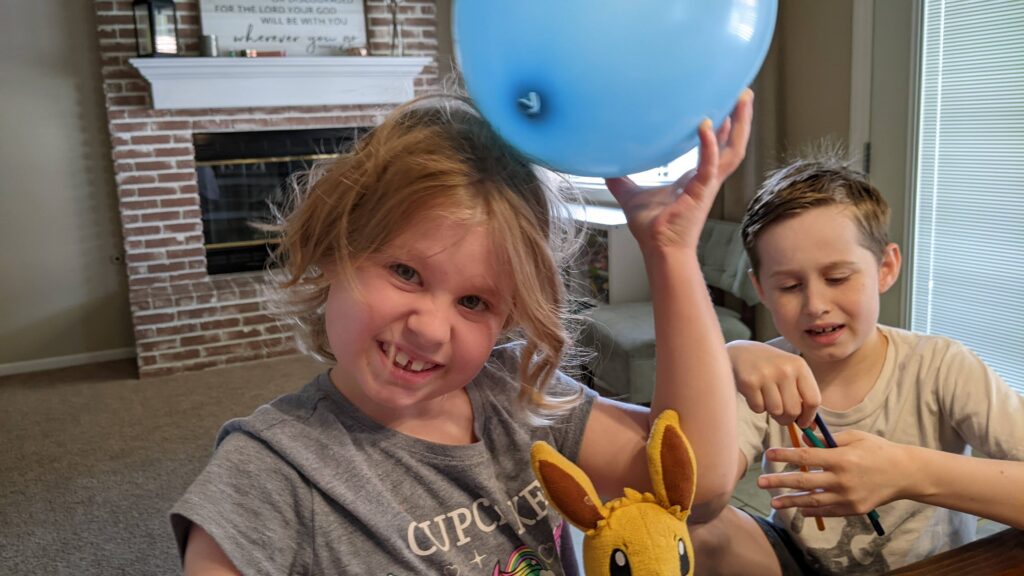
5. Separating Pepper and Salt
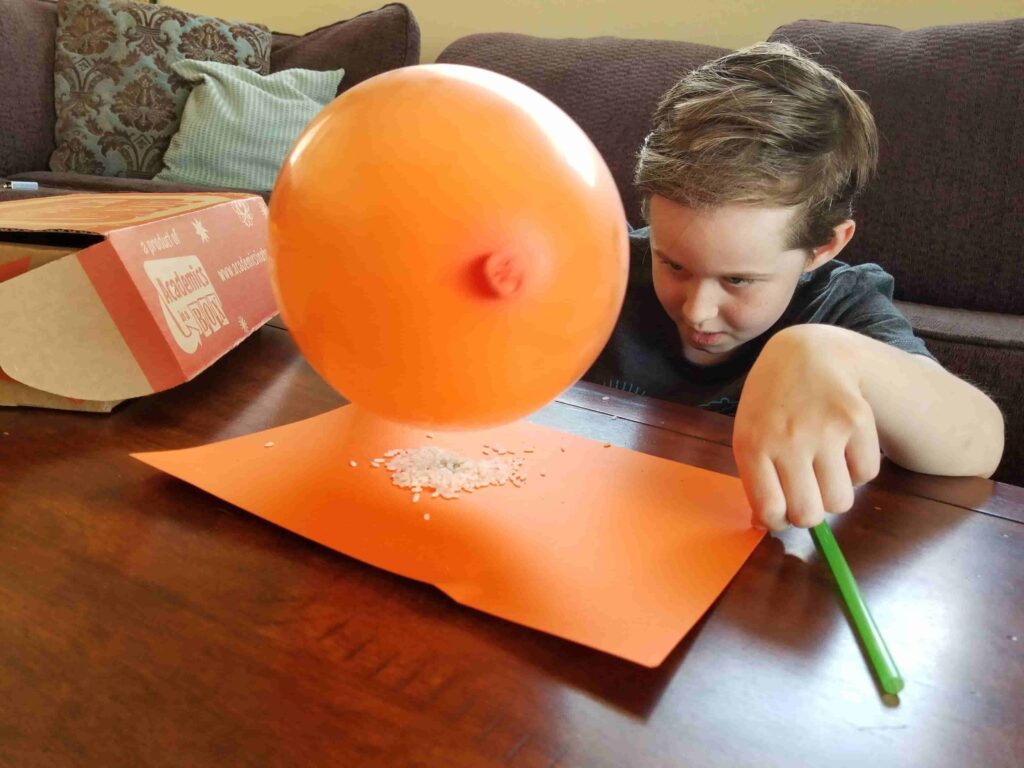
- Age: Elementary school
- Time: A few minutes
- Difficulty Level: Easy
Have you accidentally spilled both the salt and pepper? Here is a convenient way to separate them and sort through this lovely mess!
Materials:
- Fabric or your shirt
- Salt
- Pepper
- Thick straw
Instructions:
- Mix one teaspoon of pepper and salt thoroughly.
- Rub the straw on the fabric for 40 seconds.
- Place the straw over the mixture. The pepper should jump and adhere to the straw (if it’s held over the correct places).
The Science Behind the Experiment
The granules of pepper and salt are positively charged. As a result of gaining electrons directly from rubbing the cloth, the straw attracts these positive charges located in the mix. Since pepper is lighter, it will jump with greater ease to the straw.
6. Bubble Moving Balloon
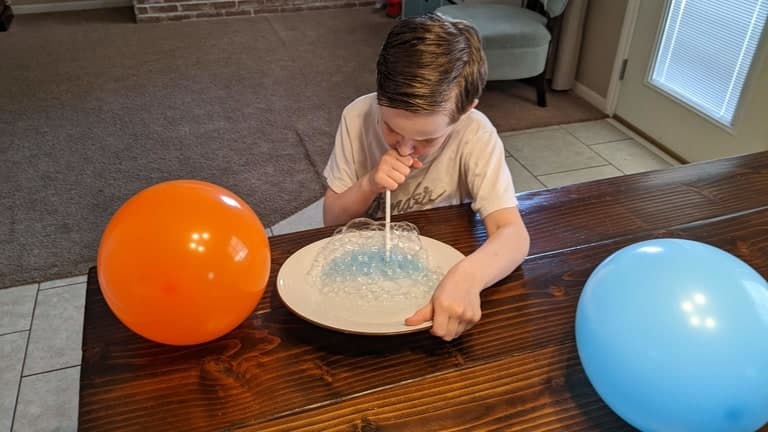
- Age: Any age
- Time: A few minutes
- Difficulty Level: Easy
This trick is fun and easy. It will delight young children and amaze older ones.
Materials:
- Smooth sheet plastic, glass, or a kitchen plate like we used
- Straw
- Dishwashing soap or bubble solution
- Charged balloon
Instructions:
- Spread the bubble solution on a sheet of glass or plastic. Blow larger bubbles on the sheet with the straw.
- Charge an object like a balloon.
- Place the object near the bubble and watch as they follow the charged object.
- Watch it move around the glass/plastic top.
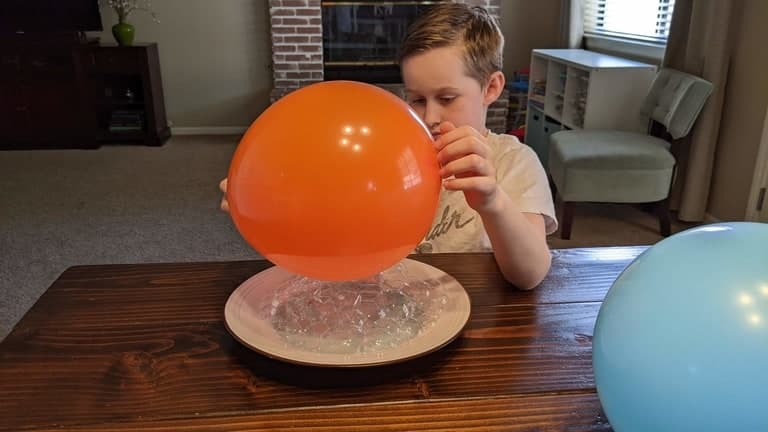
The Science Behind the Experiment
Soapy water is drawn (attracted) to any object that is charged. When there is a large bubble, you can watch it move around.
Wrapping Up
I love static electricity experiments because they can be done with stuff you have lying around your house, not especially tools required. Our favorite experiment was the butterfly one. My three-year-old pretty much thought it was magic.
Another easy item to pick up is pop rocks. My kids had a great time with all the science experiments involving the cracking, popping treat in this article. Please check out our article, Fun Pop Rock Experiments Exploring Viscosity.

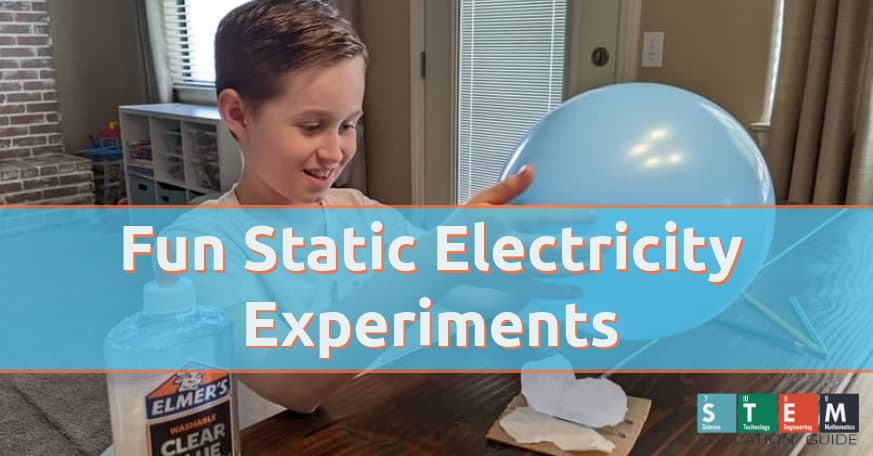



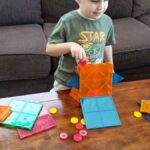





Hi Krystal
Great ideas here with materials that are readily available.
Thank you for ideas and a wonderful resource.
Kind Regards, Jan (Grandmother – Australia)
The salt and pepper experiment mentions a spoon in the directions, but it seems like it should be a straw according to the rest if the directions.
You’re right Kathryn, and thank you for pointing that out to me! The article has been updated 🙂
In the fourth one about bending water, one of the materials say ‘piece of clot’ not cloth. Just a minor error.
Thank you, good catch! I updated it.